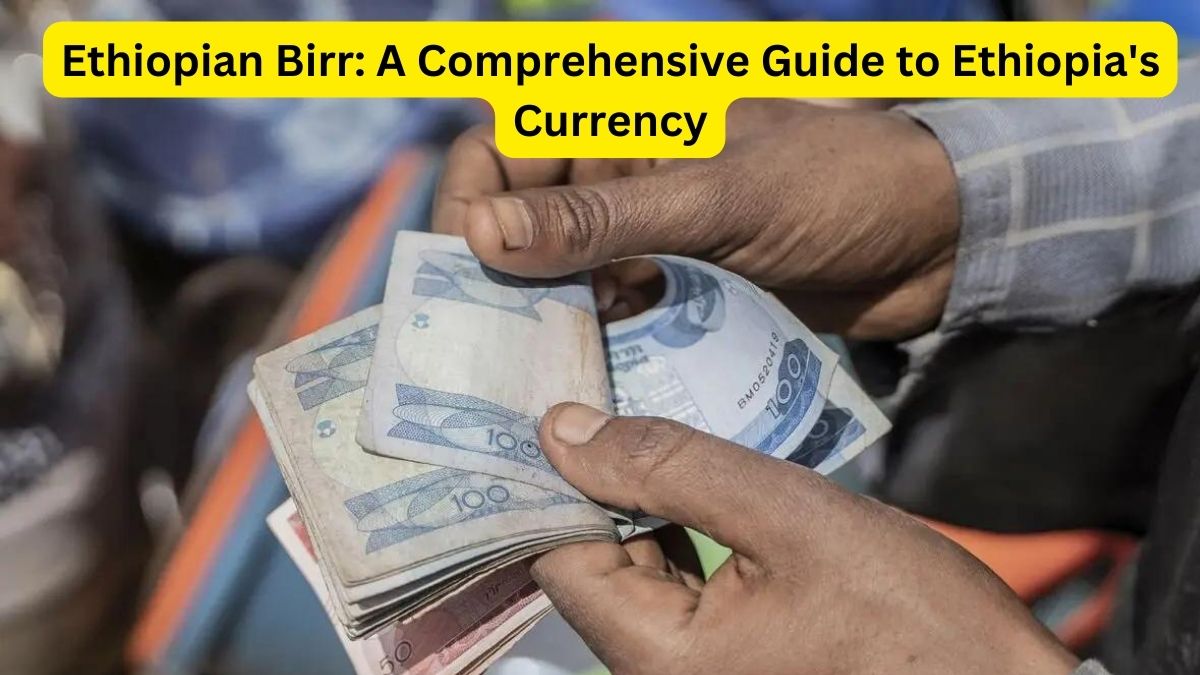The Ethiopian Birr (ETB) is the official currency of Ethiopia, a country located in the Horn of Africa. Known for its rich history, diverse culture, and ancient traditions, Ethiopia’s economic landscape is anchored by the Birr. Understanding the Ethiopian Birr is essential for anyone interested in the country’s economy, history, or planning to visit this vibrant nation. This blog post provides a detailed look into the Ethiopian Birr, covering its history, denominations, exchange rates, and role in Ethiopia’s economy.
History of the Ethiopian Birr
The Ethiopian Birr has a long and storied history. The term “Birr” originally referred to a silver coin used during the 18th and 19th centuries. However, the modern Ethiopian Birr was introduced in 1945, replacing the Maria Theresa thaler, which was widely used in the region. The Birr has undergone several changes and redesigns over the decades to improve security features and prevent counterfeiting.
Initially, the Birr was subdivided into 100 cents, and this subdivision remains to this day. The currency is issued by the National Bank of Ethiopia, which is responsible for maintaining the stability of the Birr and managing the country’s monetary policy.
Denominations of the Ethiopian Birr
The Ethiopian Birr comes in both coins and banknotes, each serving different functions in everyday transactions.
Coins
The coins in circulation include:
- 1 cent
- 5 cents
- 10 cents
- 25 cents
- 50 cents
- 1 Birr
The 1 Birr coin is the most commonly used coin for everyday transactions, while the smaller denominations are used less frequently.
Banknotes
The banknotes come in various denominations, including:
- 1 Birr
- 5 Birr
- 10 Birr
- 50 Birr
- 100 Birr
- 200 Birr
The 200 Birr note was introduced relatively recently to accommodate higher-value transactions and reduce the need for carrying large amounts of cash.
Design and Features
The design of Ethiopian Birr banknotes is rich with cultural and historical imagery. Each note features images of notable Ethiopian figures, landmarks, and symbols that reflect the country’s heritage. For instance, the 100 Birr note features Emperor Menelik II, a key figure in Ethiopia’s history, while the 50 Birr note showcases the Abay River, also known as the Blue Nile, which is significant to the country’s geography and economy.
To combat counterfeiting, the National Bank of Ethiopia has incorporated various security features into the banknotes. These include watermarks, security threads, and holographic strips that make it difficult to produce fake notes.
Exchange Rates and Conversion
The exchange rate of the Ethiopian Birr fluctuates based on various economic factors, including inflation, foreign investment, and global market trends. As of August 2024, 1 US Dollar is equivalent to approximately 55 Ethiopian Birr. However, this rate can vary, so it’s essential to check current exchange rates before making any conversions or financial plans.
Tourists and business travelers can exchange their foreign currency at banks, authorized exchange bureaus, and some hotels. It’s advisable to keep exchange receipts as they might be required for converting Birr back into foreign currency upon departure from Ethiopia.
The Role of the Ethiopian Birr in the Economy
The Ethiopian Birr plays a crucial role in the country’s economy. It facilitates domestic trade, investment, and daily transactions. The stability of the Birr is a significant focus for the National Bank of Ethiopia, as inflation and currency depreciation can impact the cost of living and economic growth.
Inflation and Economic Policies
Ethiopia has faced challenges with inflation over the years, which can erode the purchasing power of the Birr. To combat this, the National Bank implements monetary policies aimed at controlling inflation and stabilizing the currency. Measures such as adjusting interest rates, regulating money supply, and maintaining foreign exchange reserves are employed to achieve these goals.
International Trade
Ethiopia’s economy is heavily reliant on agriculture, with coffee being one of its primary exports. The exchange rate of the Birr can affect the competitiveness of Ethiopian products in the international market. A weaker Birr can make exports cheaper and more attractive to foreign buyers, while a stronger Birr can have the opposite effect.
Using the Ethiopian Birr
For visitors to Ethiopia, understanding how to use the Birr is essential for a smooth experience. Here are some practical tips:
ATMs and Credit Cards
ATMs are available in major cities and towns, allowing visitors to withdraw Birr using international debit or credit cards. However, it’s advisable to carry cash, especially when traveling to rural areas where ATMs might not be readily available. Credit cards are accepted in some hotels, restaurants, and shops in urban areas, but cash remains the primary mode of transaction.
Bargaining and Prices
Bargaining is a common practice in Ethiopian markets and smaller shops. Prices are often negotiable, and it’s expected that buyers will engage in some form of haggling. However, in established stores, restaurants, and hotels, prices are usually fixed.
Tipping
Tipping is appreciated in Ethiopia, particularly in the service industry. While there is no fixed rule, a 10% tip in restaurants or rounding up the bill in taxis is considered polite.
Challenges and Future Outlook
The Ethiopian Birr faces several challenges, including inflation, reliance on agricultural exports, and political instability. However, the government and the National Bank of Ethiopia are working towards economic reforms and policies to strengthen the currency and boost economic growth.
Conclusion
The Ethiopian Birr is more than just a medium of exchange; it is a symbol of Ethiopia’s rich history and vibrant economy. Understanding its history, denominations, and role in the economy provides valuable insights into Ethiopia’s financial landscape. Whether you are a traveler, investor, or simply curious about Ethiopia, the Birr offers a fascinating glimpse into this unique and dynamic country.
